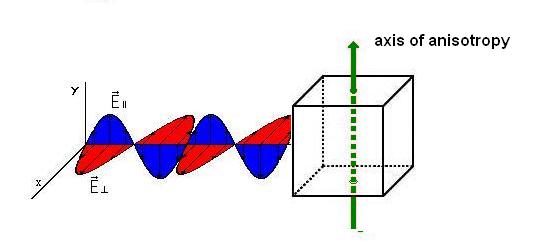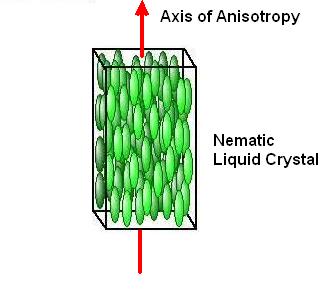10. Birefringence
Calcite crystals are available to show the double image of birefringence. One is mounted on a slide projector to produce two circular images from a single hole. As a Polaroid sheet analyzer or the crystal itself is rotated the "extraordinary" and "ordinary" images come in and out of view.
A model of the molecular structure of calcite is also available.
The diagram below shows light entering a birefringent material. Only the E-field is shown, resolved into components along the X- and Y-axis. Upon entering the material light is split into two rays, the ordinary and extraordinary ray, traveling at different velocities. The o-ray and e-ray are plane-polarized along mutually perpendicular directions. The o-ray has polarization perpendicular to the axis of anisotropy and therefore experiences a different index of refraction than the e-ray which has polarization parallel to the axis of anisotropy. The difference in the refraction indices is greatest when the light ray is traveling perpendicular to the axis of anisotropy as portrayed in the diagram. There is an instructive simulation on birefringence available through the website for the PLC project at Case Western Reserve University.

A schematic of a birefringent material showing the axis of anisotropy.

